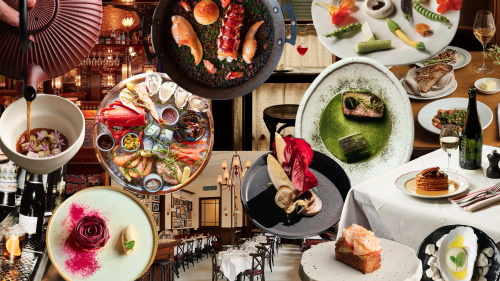Is Eating Out the New Luxury? How Dining Habits Are Changing Globally

There was a time when dining out was an ordinary part of modern life. Whether gathering with friends, enjoying a family meal, or grabbing takeout after a long day at work, eating out satisfied not just our appetite but also served as a form of social connection and daily ritual. But recently, a quiet shift has been taking place across the world—eating out is no longer just routine; it's becoming a luxury.
Prices Are Up—and Menus Reflect It
Although global inflation has somewhat cooled compared to previous years, the elevated prices appear here to stay. In the post-pandemic world, living costs have risen sharply, particularly in labor-intensive sectors like hospitality. For instance, in April 2024, California introduced new legislation that significantly increased the minimum wage for fast food employees—from $16 to $20 per hour. While the policy was designed to improve labor conditions, it also meant higher operational costs for businesses, many of which passed those costs on to consumers through increased menu prices. While this move aimed to protect workers’ rights, the added cost was inevitably passed on to customers, pushing menu prices even higher.
The cost of dining out has been climbing at a much steeper rate than the price of groceries, widening the gap between eating at home and eating at restaurants. Fast food—once considered the last-resort option for tight budgets—has also become expensive. In the U.S., fast food prices have surged by 31% over the past four years. At the same time, American households have depleted more than $2 trillion in savings within just two years, leaving less discretionary income for dining out. As a result, more people are cutting back on restaurant visits.
People Everywhere Are Tightening Their Belts
This shift isn’t confined to the U.S. In the U.K., monthly spending on restaurants has fallen to £49.3, and takeaway spending is down to £42.3. In China, the pace of food inflation accelerated in March 2025, with prices rising 4.2% compared to the same month the previous year—an increase from the 2.8% annual growth recorded in 2024. In South Korea, spending on dining out reached a record high in 2024, making up 50.2% of total food-related household expenses. And in Argentina, where inflation has soared, restaurant prices nearly doubled in dollar terms between 2024 and 2025.
From developed nations to emerging markets, going out for a meal has become increasingly burdensome.
Restaurants Are Struggling Too
Rising prices aren’t just about profits—restaurants themselves are under pressure. Post-pandemic, many businesses are contending with a triple burden: surging rents, raw material costs, and labor expenses. On May 2, 2025, the UN Food and Agriculture Organization reported a global food price increase of 7.6% year-on-year in April, with grains, meat, and dairy among the most affected. For restaurants, cost control has become a serious challenge—one that inevitably shows up on the bill.
Young People Are Returning to the Kitchen
Interestingly, it’s young people—once the most avid restaurant-goers—who are now becoming more frugal. Rather than frequenting eateries, many are rediscovering the kitchen and learning to cook at home. It’s not that their passion for food has waned, but rather that the cost of eating out has become prohibitive.
For some, this change has led to a new lifestyle—one that values the source of ingredients, nutrition, and hygiene. Even those who once relied heavily on takeout are now taking pride in preparing a meal from scratch.
Post-Pandemic Dining: A Lifestyle Reset
The shifts prompted by the pandemic weren’t just temporary coping mechanisms—they’ve reshaped long-term behavior. Cooking at home has become more common, and social media is now filled with photos and videos of homemade meals. Health consciousness has also deepened, with more attention given to the freshness, safety, and nutritional value of ingredients. Many now prefer to control the cooking process themselves.
This trend also signals a deeper psychological shift: eating is no longer just about sustenance, but also about regaining a sense of control over life.
Eating as Emotional Spending
Even though people are eating out less frequently, their expectations when they do are much higher. Dining out has evolved into a form of reward or ritual—a way to celebrate a promotion, mark a birthday, cope with stress, or simply treat oneself after a tough week.
This has given rise to a new trend: aesthetic appeal and unique experiences have become key criteria for choosing a restaurant. Many young people seek out “Instagram-worthy” spots to capture and share, turning food into a kind of social currency. Restaurant choices are increasingly driven by social media recommendations, reviews, and photos.
From Routine to Rare Treat
The changing nature of dining habits isn’t just an economic story—it reflects broader shifts in social attitudes. From rising costs to evolving values, from digital influence to health awareness, the idea of eating out has transformed. It is now often viewed as a special experience, rather than a daily convenience.
We may not know whether our next meal will be eaten out or cooked at home—but one thing is clear: people are redefining what it means to eat well.



